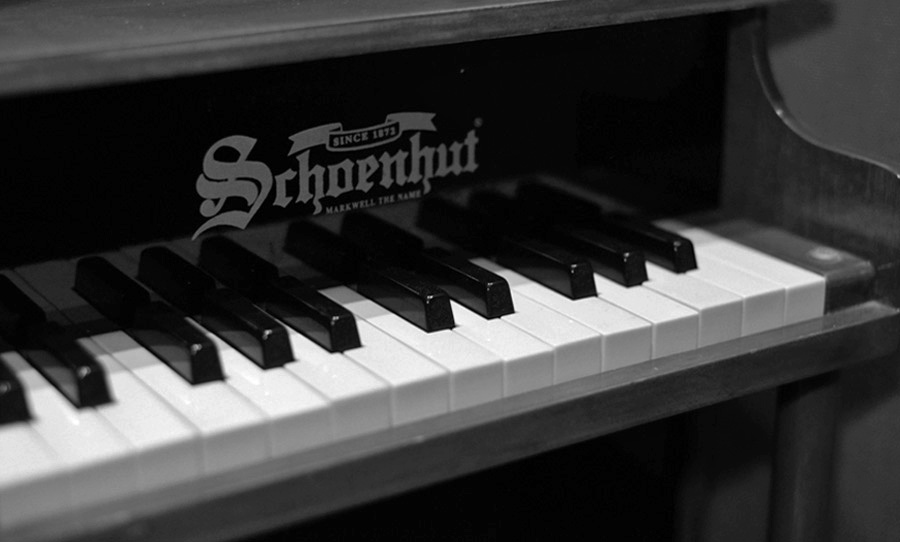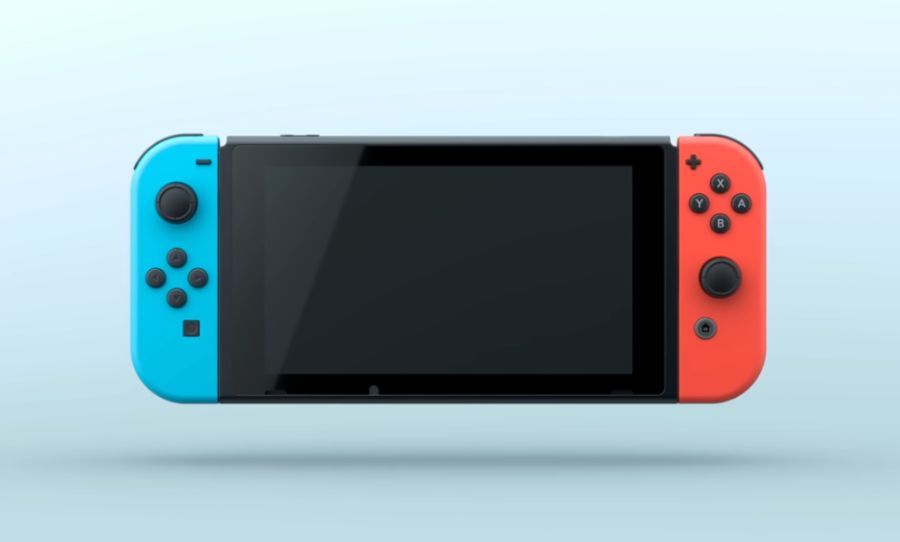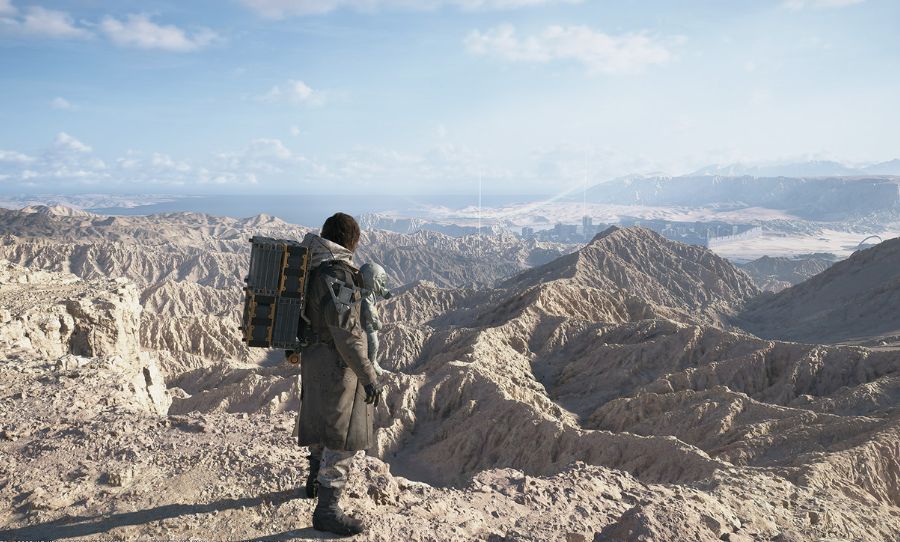Childhood is often conflated into a few overwhelming memories that form a kind-of distant, draping, impression. The way foresight tends to accumulate sensations rather than events, lends us grand notions of childhood rather than nuanced ones.
Capturing the nuances of childhood in art then, has often been a whimsical, pre-pubescent colouring of fantasy and innocence. All the ways we imagine we imagined the world then.
Yet, the toy piano can condense some truth about childhood, through its dichotomy of sound. When played slowly and with space, a stand-alone toy piano melody can feel like a lullaby, with the innocence and magic and starkness of childhood. When played quickly and with weight, the toy piano can impress great fear and suspense onto the tiny sound, that lends-to the cinematic feelings of creeping or chasing.
Its physicality also serves the child within.
From avant-garde performances to cinema to pop music, the Schoenhut Toy Piano is as much a music-making tool as it is a portal to the past. Unlock the child within.
The Schoenhut Toy Piano
Schoenhut Toy Pianos truly are toys, used by infants and children alike, with the exhilaration of feeling like a normal-sized piano to a quarter-human, as you imagine them – in a tiny tuxedo, banging the 30-ish keys like they mean something.
The piano looks almost like a reduced version of a grand piano; like a miniature replica your mother keeps on the top cabinet shelf. It sounds shrunken too; like the tiny, high-pitched voice a cartoon character makes when they are inevitably shrunken by some kind of shrink ray.
The result is something of a percussion instrument rather than a piano, because it is no longer an acoustic instrument with strings, but hammers hitting metal rods; something like a xylophone. You expect the sound of a grand piano to come out of this miniature, and you get the sound of a mousy, chime-like piano. The effect is an instrument that is inherently humorous.
The Schoenhut Toy Company, at one time the largest toy manufacturer in the United States, makes these pianos to be a child’s first instrument, found in Targets and vintage homeware stores. The perks are obvious. The instrument is much like a ‘real’ instrument because each key represents one note; it looks and feels like a full-sized piano so that a child can develop physical and scaled melodic skills; it’s heavy duty – for the banging of keys with which a child will inevitably begin their musical styling; in saying that, it stays forever in tune. It also allows you to play full and complete melodies. Schoenhut Toy Pianos come with piano sheet music to encourage more than random key-bashing.
However, these toy pianos have also caught the attention of professional musicians, for their challenge, their spectacle and their whimsical sound.
The Avant-Garde
For the toy-piano performances of avant-garde pianist Margaret Leng Tan, it is about the spectacle of the thing before it is about the sound. She makes art out of the appearance of sitting and playing a toy, almost distracting the audience with the spectacle, while the clattering, malign tones of the instrument awaken the audience to the music.
She sits cross-legged or on her knees at the tiny piano (in such a way that only a petite person could), facing directly towards the audience, and plays the piano with all the seriousness of a concerto. But she’ll be wearing a pig nose or interjecting with a clown horn. The audience will laugh, if only for the ridiculousness of it all.
It is significant, then, that she has quoted Dada artist Marcel Duchamp in her influences for using the toy, saying, “poor tools require better skills.” For this classically-trained pianist, the choice to play the toy piano is about the challenge for herself to play it, and the challenge for the audience to listen to it. A sound that is obscure and unexpected.
Melodies are confronting on the toy piano because it is difficult to play chords. They are mostly dissonant. She has to make the instrument bearable, and then beautiful, for the audience.
Following in this Dadaist vein, the spectacle is also conceptual. A physical toy to Margaret seems to represent something lost. A relic of the past that is decreasingly part of the childhood experience. She plays us into childhood by playing on a tool of childhood.
The instrument is also very cheap, a second-hand Schoenhut Toy piano costing as little as $30. She makes something obscure out of something ordinary. The audience she draws into her concerts, such as the one she played at Carnegie Hall, mimic this obscurity; bringing an alternate crowd – to what would be expected at a classical piano performance – into this elaborate, historical space, to watch something self-consciously absurd.
The Pop World
There can be spectacle within the studio as well. An instrument can stand to represent something inherent in its sound. In Alt-J’s Breezeblocks, the ethereal, childlike amnesia that allays the track, manifests in the use of the toy piano.
The piano begins to complement the words at the line, Do you know, where the wild things go? – a reference to the children’s book, Where the Wild Things Are. The toy piano is very distinct, like someone ringing a handbell. The wild things are the ones that come around to steal your lover. Because love – still ambiguous to adults, as it is to children – can only be retained by being held captive, away from predators. Love is entirely animalistic; entirely childish.
The repetition of, Please don’t go, I’ll eat you whole/ I love you so, in the refrain turns this childhood-tantrum of an idea – that if you can’t have something, you don’t want anyone to have it – into a desperate and disturbing plea from one person to their lover. I’ll eat you whole, because I love you so much I can’t share you. The song uses childhood imagery and instruments to explore the adult experience of possessive love.
The Cinematic
In film, the sound of longing and imagination can be found in the toy piano’s light, stunted, bell-like scale. Two toy pianos are played simultaneously to create Yann Tiersen’s album, The Waltz of the Monsters, featured extensively in the popular French film Amelie.
Amelie is a renowned dreamer. She makes an optimistic fantasy world out of the real world, in which she can change the circumstances of peoples’ lives by performing small, well-meaning gestures. In these moments of fantasy and optimism, the toy piano enacts the playful, bouncing rhythms of a harpsichord, emblematic of French cinematic music.
It creates romance out of both place and character, like in the song La Redecouverte. There is also something natural in the toy piano’s sound, for instance in La valse d’Amelie, like the wind is playing through a collection of chimes that lives on the back porch of someone’s country home in the South of France.
When the Schoenhut Toy Piano is played by musicians, the child for whom it was made aligns on the track. It sounds like a toy and, therefore, when played with the skill of a professional, works on the level of both toy and instrument.
It conflates the expert and the amateur; the child and the adult. We are all children to some extent because we remember what it means to be a child. We carry our childhoods with us. So, we play the toy piano when we want to take ourselves back to a moment we can’t quite remember, but want to imbue our current adult meaning onto.



